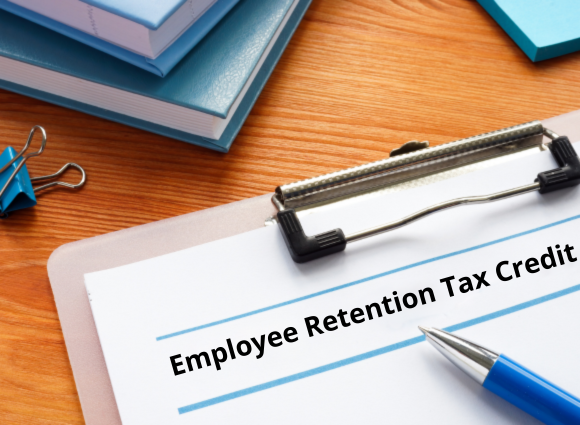
New Law Includes Favorable Changes for Individuals
The massive COVID-19 relief bill signed by President Trump on December 27, 2020, contains a variety of tax breaks and authorizes direct payments to eligible individuals. The law is titled the Consolidated Appropriations Act of 2021 (CAA) but two sections of it are called the COVID-Related Tax Relief Act (COVIDTRA) and the Taxpayer Certainty and Disaster Tax Relief Act (TCDTRA).
Before the CAA was signed into law, a multitude of federal income tax breaks were set to expire on December 31, 2020. This article covers these so-called “tax extenders” that benefit individuals. The extenders are tax breaks that Congress has repeatedly allowed to expire before restoring them — often retroactively. We’ll also cover some other important changes included in the law that benefit individuals.
College Tuition Deduction and the Lifetime Learning Credit
Before the new law, there were three tax breaks available for qualified education expenses: The Tuition and Fees Deduction, the Lifetime Learning Credit and the American Opportunity Tax Credit.
For 2020, the Tuition and Fees Deduction could be up to $4,000 at lower income levels or up to $2,000 at middle income levels. If your 2020 modified adjusted gross income (MAGI) allows you to be eligible, you can claim the deduction whether you itemize or not. Here are the income thresholds:
- For 2020, a taxpayer with a MAGI of up to $65,000 ($130,000 for married filing jointly) could deduct qualified expenses up to $4,000.
- For 2020, a taxpayer with a MAGI between $65,001 and $80,000 ($130,001 and $160,000 for married filing jointly) could deduct up to $2,000.
- For 2020, the allowable 2020 deduction was zero if your MAGI was more than $80,000 ($160,000 for married filing jointly).
New law: Before the new law, an unfavorable income phase-out rule applied to the Lifetime Learning Credit, which can be worth up to $2,000 per tax return annually. For 2021 and beyond, the new law aligns the phase-out rule for the Lifetime Learning Credit with the more favorable phase-out rule for the American Opportunity Tax Credit, which can be worth up to $2,500 per student. In turn, the TCDTRA repeals the Tuition and Fees Deduction for 2021 and beyond. In effect, the law trades the old-law write-off for the more favorable new-law Lifetime Learning Credit phase-out rule.
Key Point: After this change, both the Lifetime Learning Credit and the American Opportunity Tax Credit are phased out for 2021 and beyond between a MAGI of $80,001 and $90,000 for unmarried individuals ($160,001 and $180,000 for married couples filing jointly). Before the new law, the Lifetime Learning Credit was phased out for 2020 between a MAGI of $59,001 and $69,000 for unmarried individuals ($118,001 and $138,000 married couples filing jointly).
Talk with your tax advisor about which of the two remaining education tax breaks is the most beneficial in your situation.
Emergency College Financial Aid Grants and Higher Education Tax Credits
Eligible individuals can claim the American Opportunity Tax Credit (worth up to $2,500 per student) or the Lifetime Learning Credit (worth up to $2,000) for qualifying higher education expenses. However, expenses paid from federal-income-tax-free sources generally can’t be used to claim these credits.
New law: The COVIDTRA grants federal-income-tax-free treatment to certain CARES Act emergency financial aid grants to college students. Under a temporary exception, expenses paid with these tax-free grants can be used to claim the two higher education tax credits. The exception applies to qualified emergency financial aid grants made after March 26, 2020, pursuant to the CARES Act.
Itemized Medical Expense Deductions
The Tax Cuts and Jobs Act (TCJA) set the threshold for itemized medical expense deductions at 7.5% of adjusted gross income (AGI). The threshold was scheduled to increase to 10% of AGI for 2021 and beyond, which would make it harder to get a medical expense deduction.
New law: The 7.5%-of-AGI threshold is permanent for 2021 and beyond.
Treatment of Forgiven Mortgage Debt
For federal income tax purposes, a forgiven debt generally counts as taxable cancellation of debt (COD) income. However, an exception applies to COD income from cancelled mortgage debt that was used to acquire a principal residence. Under the exception, up to $2 million of COD income from principal residence acquisition debt that was cancelled in 2007-2020 qualified as a federal-income tax-free item ($1 million for married individuals who filed separately for those years).
New law: This tax break is extended to cover principal residence mortgage debt that’s forgiven in 2021-2025. However, the maximum amount of forgiven debt that can be treated as tax-free for those years is reduced to only $750,000 ($375,000 for married individuals who file separately).
Mortgage Insurance Premium Write-Off
Premiums for qualified mortgage insurance on debt to acquire, construct, or improve a first or second residence can potentially be treated as deductible qualified residence interest. The deduction is phased out for higher-income individuals.
New law: This tax break is extended through 2021.
Treatment of Employer Section 127 Plan Payments Toward Employee Student Loans
The CARES Act allows federal-income-tax-free treatment for payments made by employer-sponsored Section 127 educational assistance plans toward student loan debts of participating employees. Between March 28, 2020, and December 31, 2020, up to $5,250 per employee could be paid out (towards principal or interest) with no federal income tax for the employee. Employers can deduct the payments.
New law: This break is extended to cover qualifying student loan debt payments made under Section 127 plans through December 31, 2025.
Two Favorable Changes for Charitable Gifts
- Write-offs for those who don’t itemize. For 2020, individuals who don’t itemize deductions can claim a federal income tax write-off for up to $300 of cash contributions to IRS-approved charities. The same $300 limit applies to both unmarried taxpayers and married joint-filing couples.
New law: This tax break is extended to cover $300 of cash contributions made in 2021. The new law doubles the deduction limit to $600 for married joint-filing couples for cash contributions made in 2021.
- Charitable deduction limit for generous donors. Before 2020, individuals couldn’t claim an itemized charitable deduction for cash contributions to IRS-approved charities that exceeded 60% of adjusted gross income (AGI).
New law: The CARES Act suspended the AGI limit for qualifying charitable contributions made in 2020. The new law extends the taxpayer-friendly suspension to 2021.
Calculating the 2020 Refundable Child Credit and Earned Income Tax Credit
Refundable tax credits are those that can be collected even if a taxpayer has no federal income tax liability. Eligible taxpayers can claim a refundable Child Tax Credit (CTC) equal to 15% of earned income in excess of $2,500. The refundable Earned Income Tax Credit (EITC) equals the applicable percentage of an eligible taxpayer’s earned income.
Earned income means wages, salaries, tips, other taxable employee compensation and self-employment income. More earned income can translate into bigger refundable credits, and less earned income can translate into smaller refundable credits. Obviously, lots of people had lower earned income in 2020 due to COVID-19, which could result in lower refundable credits for many cash-strapped workers.
New law: For purposes of calculating allowable CTCs and EITCs for the 2020 tax year, the law allows taxpayers to use either their 2020 earned income or their 2019 earned income amount if that’s more than the 2020 figure.
Rules for Using Up Flexible Spending Account Balances
An employer-sponsored healthcare Flexible Spending Account (FSA) plan can allow an employee to carry over up to $550 of his or her unused FSA balance into the following plan year. This rule is called the carryover rule. At the employer’s option, a separate grace period rule can be offered, to give employees up to 2½ months after the plan’s year end to submit qualifying expenses for reimbursement and thereby use up their FSA balances. Healthcare FSAs can offer either the carryover rule or the grace period rule, but not both.
For dependent care FSAs, employers can’t offer the carryover rule, but they can offer the grace period rule.
New law: For plan years ending in 2020 and 2021, employers are allowed to extend healthcare FSA and dependent care FSA grace periods for up to 12 months into the following plan year. For these plan years, both types of FSA plans can apparently also allow the carryover rule in addition to the grace period rule — although this isn’t entirely clear. IRS guidance is needed. The employer can also allow an employee who ceases to participate in an FSA during calendar year 2020 or 2021 to continue to receive reimbursements from unused balances through the end of the plan year in which an employee’s participation ceased, including any grace period.
Educator Expense Deductions
Eligible K-12 teachers and instructors are entitled to a $250 annual above-the-line deduction for certain school-related expenses paid out of their own pockets.
New law: By no later than February 28, 2021, the IRS must issue official guidance to clarify that the cost of personal protective equipment (PPE), disinfectant, and other supplies used to prevent the spread of COVID-19 will count as allowable expenses for the $250 education deduction. This guidance will apply to such expenses paid or incurred after March 12, 2020.
Much More
As you can see, the new law provides a variety of tax breaks for individuals. This article only covers some of them. If you have questions or want more information, contact us.



